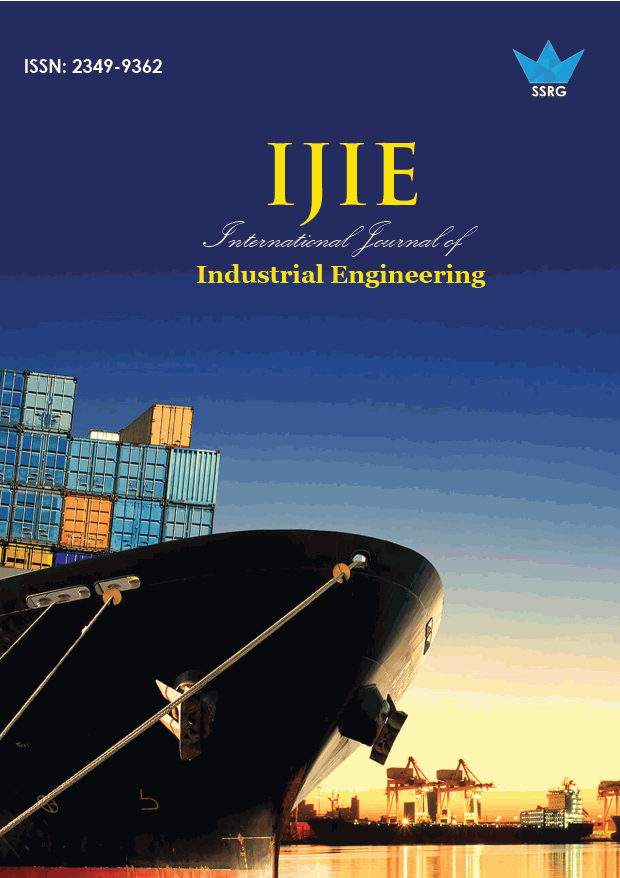Application Poka-Yoke to Capture Defect (A Case Study in Industry Component Otomotive)

| International Journal of Industrial Engineering |
| © 2019 by SSRG - IJIE Journal |
| Volume 6 Issue 1 |
| Year of Publication : 2019 |
| Authors : Hernadewita, Feri Ali Tosa,Yadi Santoso, Lien Herliani Kusumah, Hermiyetti |
How to Cite?
Hernadewita, Feri Ali Tosa,Yadi Santoso, Lien Herliani Kusumah, Hermiyetti, "Application Poka-Yoke to Capture Defect (A Case Study in Industry Component Otomotive)," SSRG International Journal of Industrial Engineering, vol. 6, no. 1, pp. 14-17, 2019. Crossref, https://doi.org/10.14445/23499362/IJIE-V6I1P103
Abstract:
XYZ is one of the companies that manufacture automotive spare parts. At present the company should focus on producing high quality, non-handicapped products with the fastest production time to win business competition. The company's strategy is to carry out kaizen which is a continuous improvement with the aim of preventing defective materials from entering the production process in the most effective manner. The method used by the company is to conduct inspection on incoming materials using poka-yoke method. The decision to run poka-yoke has been proven by reducing the amount of dimension defects material on the B8A rotor component of the supplier delivered to the production process up to zero the following month and producing a better cycle time in the 79.77 second. It can be concluded that the poka-yoke method is the right way to prevent the defective material from entering into a production process that can cause a defective.
Keywords:
Application Poka yoke, cycle time ,defective component , Incoming quality control.
References:
[1] Shafly Naufal, Priyanto wawan, 2018. “ AISI , the 2018 motorcycle sales prediction has a 3-4 percent increase “ source web : https://otomotif.tempo.co/read/1047844
[2] Celso E. Esquetini, Jorge A. Achcar, Carlos M.O. Valente, Claudio L. Piratelli ” Use of Poka-Yoke to Prevent Losses in a Metallurgical Industry’s Kit Packaging Process ” International Journal of Emerging Engineering Research and Technology Volume 4, Issue 7, July 2016, PP. 23-31.
[3] Yash Dave , Dr.Nagendra Sohani “ Implementation of poka-yoke Technique in a gear industry ” International Journal of Latest Research in Science and Technology, May-June 2015,PP. 32-33.
[4] Yubao Chen, Zhiqiang Mu, and Bin Zhao “poka-yoke: technique to prevent defects” international journal of engineering sciences &researchTechnology November 2015 ,PP.4-11.
[5] Pratik D. Tak, Shravan S. Wagh ” poka yoke implementation on punching machine: a case study “ International Journal of Research in Engineering and Technology Feb-2015,PP.19-21.
[6] A.Saptari, W.S. Lai, M.R. Salleh, Jig Design, Assembly line design and work station design and their effect to productivity, Jordan Journal of Mechanical & Industrial Engineering, 5 (2011) 9-16.
[7] J.Jamshidi, P.G. Maropoulos, Methodology for High Accuracy Installation of Sustainable Jigs and Fixtures, in: G. Seliger, M.K. Khraisheh, I.S. Jawahir (Eds.), Advances in Sustainable Manufacturing, Springer, Heidelberg, 2011, pp. 149-155.
[8] M.Jackson, A. Zaman, An analysis of flexible and reconfigurable production systems. an approach to a holistic method for the development of flexibility and reconfigurability, International Journal of Modern Engineering. 9 (2007) 12-25.
[9] Z.Bi,S. Lang, and W. Shen, Reconfigurable manufacturing systems: The state of the art, Int. J. Prod. Res. 46 (2007) 967-992.
[10] Patil, P.S & Parit, S.P. 2013. Review Paer on “Poka Yoke : The Revolutionary Idea in Total Productive Management”. International Journal of Engineering and Science February 2013. ISSMN : 2278-4281. Vol 2. Issue 4. Hal 19-24.
[11] Varun Kumar ,2016 , Implementation of Poka-Yoke in Manufacturing Industry, International Journal of R & D in Engineering ,Science and Management, Vol.3, Issue 7, April 2016, p.p.214-221, ISSN 2393-865
[12] J.Paquin,J. Couillard, D. J. Ferrand, 2006, Quality Research Methodes as Factor of Improvement of Pre Production, Journal of achievements in Materials and manufacturing Engineering vol. 18, PP. 435-438.

 10.14445/23499362/IJIE-V6I1P103
10.14445/23499362/IJIE-V6I1P103